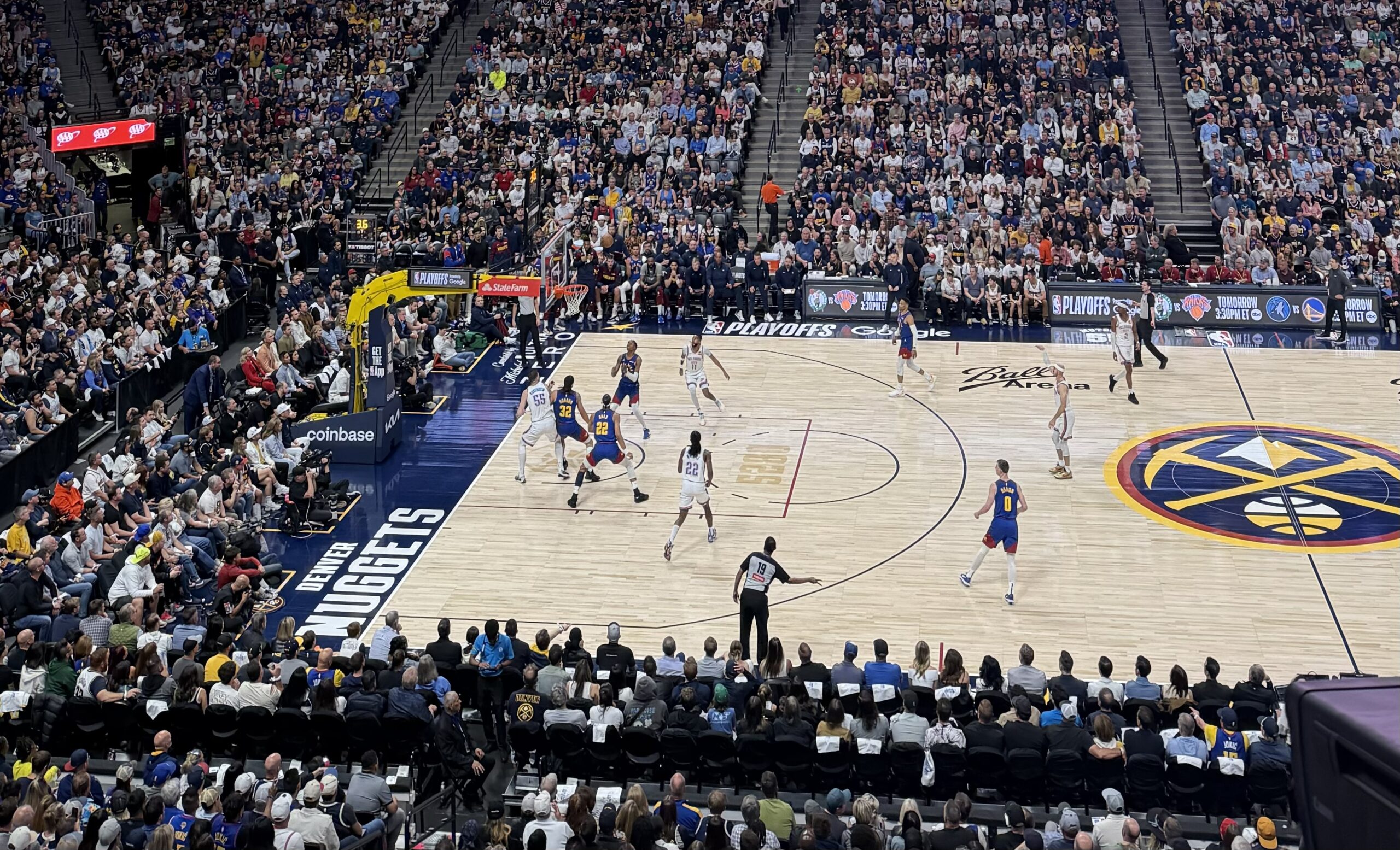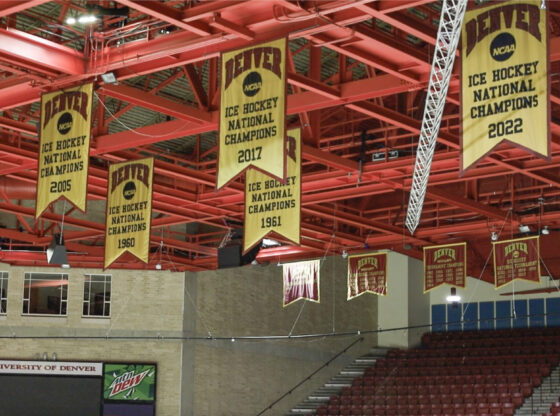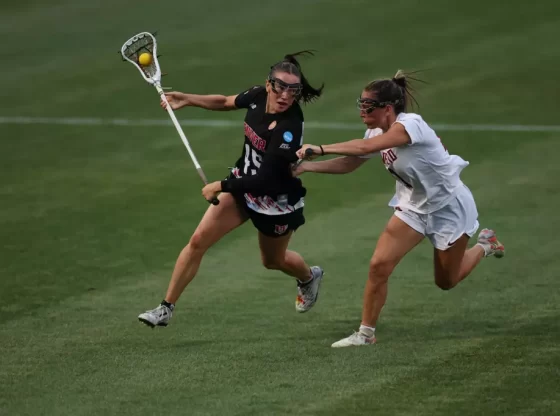 Photo by: Andrew Fielding
Photo by: Andrew Fielding
Over the course of a few days, the University of Denver athletics program went from being an outsider in the Sun Belt Conference to being labeled as the potential “heart” of the Western Athletic Conference.
In what is seemingly the biggest day in the history of Pioneer athletics, the university accepted an invitation to join the WAC starting in the 2012-13 as a non-football member.
The move helps DU relocate to a conference that makes sense geographically. It also helps the WAC, as it replaces departing schools Boise State, Fresno State and Nevada, with a school located in the city of the conference’s headquarters.
“The conference headquarters is in the middle of the conference, and DU represents the middle of the conference,” said WAC Commissioner Karl Benson. “You could state that DU is in the heart of the WAC and will represent the heart of the WAC as it becomes a building block and a stable member of our conference.”
Denver joins Texas State and Texas-San Antonio in the WAC expansion plan that was unveiled over the course of the last few weeks. Both Texas State and Texas-San Antonio join as football members.
In addition to the men’s and women’s basketball team, Denver brings eight other athletic programs, including men’s and women’s tennis, men’s and women’s golf, women’s soccer, gymnastics, volleyball and women’s swimming and diving.
The men’s swimming and diving team is still undecided as to where they will go when the school abandons the SBC, according to a DU media representative.
The idea of adding the Pioneers as a non-football member stems all the way back to 2005 when the conference added New Mexico State, Utah State and Idaho to become a nine-team league, said Benson.
“I first introduced the idea in 2005-2006 because I liked the idea of having a 10 team conference,” said Benson. “In June of 2009 we did a comprehensive evaluation noting both the advantages and disadvantages of a 10-team league with a non-football member; it was received with mixed support, but it didn’t have fully support.”
Denver will leave the SBC after the 2011-12 athletic season. The Pioneers joined the SBC in 1999 to become a member of Division I athletics in all 17 of its programs. Over a decade later DU Athletics is making plans for a change that not alters the foundation of the WAC, but also affects the landscape of college basketball.
“The question two years ago was, ‘How can we reinvent intercollegiate athletics?'” said Peg Bradley-Doppes, vice chancellor for athletics and recreation. “We didn’t have a football team [which made it hard], but it came down to making our product really competitive and making sure we were doing it the right way.”
In recent years, several major conferences including the Pac 10, the Big East and Big Ten have made additions that have helped alter the image of each conference.
“The world of intercollegiate athletics will remain turbulent, because conference affiliation is always changing,” said Bradley-Doppes. “As things such as the men’s and women’s basketball field grows, you will continue to see more change.”
The move to the WAC makes the most sense to DU’s athletic program, according to Doppes. However, it wasn’t the only conference that the school aimed to join.
Now as a member of the WAC, Denver can draw national attention. The conference already has a television deal with ESPN set through 2017.
“The WAC needed DU and DU needed us,” said Benson. “So it was a partnership that made sense for both parties.
Ball, time bounces DU’s way
Everyone in affiliation with the move is in agreement that one element made the move possible: time.
“Timing sometimes is what is necessary to make deals, and this was a deal,” said Benson.
When talking about timing in terms of DU athletics, the men’s basketball program is coming off a 19-win season while the women’s team is looking to expand off 18 wins from a year ago.
“It’s all part of the dominoes falling, and we are fortunate to be in a position where the school keeps getting better every year in every area,” said head basketball coach Joe Scott. “We have been building a program, so this could happen and I feel good from our standpoint that we will be competitive in the WAC once we enter it.”
Without a football team, Denver needed its basketball programs to develop in order to gain recognition from a conference like the WAC.
“It is a fact. If the basketball program still wasn’t doing well, then I don’t know if this could have taken place,” said Scott.
As for how the move will affect the men’s and women’s basketball program in the future, both Scott and women’s head coach Erik Johnson agree that there will be more of a name recognition representing the WAC when on recruiting trips.
“The WAC is a brand that people recognized and is associated with excellence,” said Johnson. “It is associated with a high level of athletics and will only make DU raise awareness on a national level.”
“The Sun Belt didn’t hurt us, but it really didn’t help us [in terms of recruiting],” said Scott. “However, kids have heard of the WAC, so that means the interest levels can increase.”
Historically, the WAC is known for getting at least two members to the NCAA men’s basketball tournament. Last season, both Utah State and New Mexico State punched tickets to the big dance. The Aggies did so on an at-large bid, something DU may grasp once it makes the shift in 2012.
“I have always felt if DU was in the WAC then they could take advantage of our assets and become a top 25 team,” said Benson. “Can DU basketball become a Gonzaga basketball? Absolutely.”
Before the move happens though, Denver basketball plans to continue on thriving in the Sun Belt and accomplish the goals both programs have set.
“We want to win the Sun Belt before we go and we think we can with it twice,” said Johnson. “We certainly would like to go out on a high note.
Finding a new home
In its 11-year relationship with the SBC, DU has claimed 29 conference championships and have had 221 individual athletes selected to All-SBC teams.
The partnership between school and conference has been strong throughout. However, one factor – geography – left the bond with an expiration date
“The Sun Belt has been wonderful to us, but the geographic location of most teams doesn’t work for us,” said Doppes. “Denver as a city is geographically challenged, because we are sort of separated from a lot; however in the WAC our student-athletes won’t have as much wear and tear.”
In addition to less extensive road trips, the new conference allows DU to build new traditions in the Mountain West region.
“It is a conference where we can build rivalries and broaden our coverage,” said Scott. “Where we are right now, we don’t play any conference games in our time zone, and now we will be playing games that make a lot more sense for us. Over the long course of the season the geographic factor is going to be huge on our players.”
In the next one or two seasons, the 10 athletic programs that are currently members of the SBC will have to depart from a conference, in which many of them have been successful.
“The Sun Belt is a great league,” said Johnson. “But in a new conference, our players can have a feeling of identity, belonging that they don’t necessarily have in the Sun Belt.”
When Denver joins the WAC officially in 2012, it will be the conferences 50-year anniversary. Before the addition of the Pioneers, the WAC was the only conference in the country that didn’t have a school in the same state of its headquarters.
When Denver joins the WAC officially in 2012, it will be the conference’s 50-year anniversary. Both DU and WAC were looking to redefine their respective identities; what they concluded is that they have jointly forged a new image.









